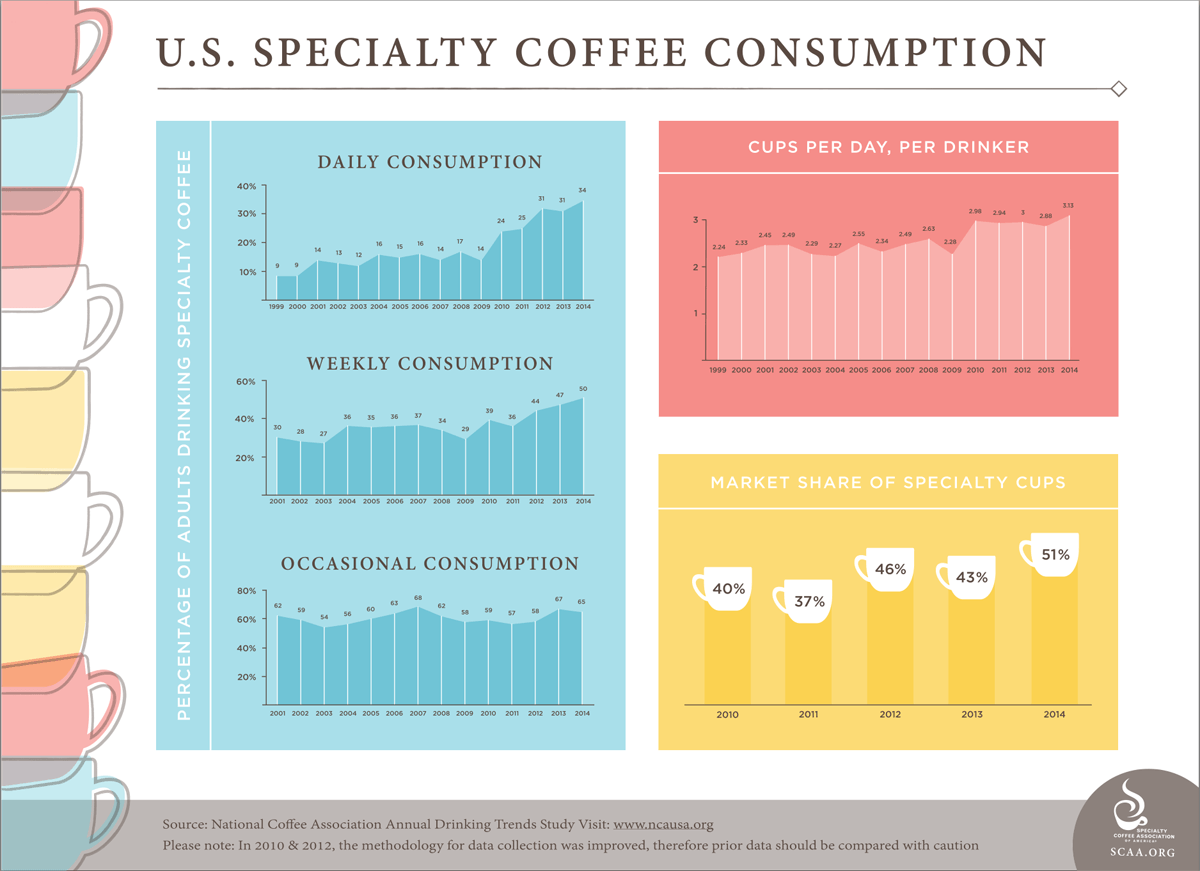Grounds for Excellence: Why Fresh Coffee Grounds and Grind Size Matter

What’s the big deal about grinding your own coffee and getting the size just right? Believe it or not, this topic definitely isn’t just for devout coffee snobs; anyone can elevate the flavor and freshness of their brew with a little knowledge and experimentation with their daily grind. Today we’re going to cover why buying pre-ground doesn’t perform as well as freshly ground whole bean coffee, which grind sizes perform best for each brewing method, and what kind of grinder you should be looking for to get the best grind-at-home coffee experience.
Why Buy Whole Bean Coffee?
Whole bean coffee is at its peak freshness and flavor within the first two weeks after roasting when properly stored away from light, oxygen, and heat. Put those roasted beans to the grindstone, so to speak, and their freshness is a different story. Within just 15 minutes of being ground, coffee can lose over half of its aroma. And the finer the grind, the faster coffee deteriorates; smaller particles expose a greater surface area of the bean to oxygen, accelerating the off-gassing of coffee’s volatile organic compounds (some of the stuff that makes coffee, well, coffee). Basically, lots of the good stuff in your roasted beans goes poof soon after being ground. Put into a bag and used bit by bit over a period of a few weeks, the ground coffee will rapidly lose its flavor. By week two or three, your coffee will have far less flavor than it had when freshly ground. While grinding your own coffee does add an additional step to the brewing process, it’s definitely worth considering if you’d like to experience artisan-roasted specialty coffee (like ours!) at its highest, most delicious potential. You can get a much better daily brew and a higher quality cup for your money if you grind your own beans at home.
Coffee Grind Sizes Explained
Before we talk shop about which grinders are best, let’s take a quick walk-through of different grind sizes, what brewing method they are used for, and what each grind size looks and feels like.
Two Common Questions about Grind Sizes
My coffee tastes bitter; will a different grind size help?
A different grind size can certainly help, but the issue you are likely facing is overextraction. Matching your grind size to your equipment is the first step to solving this problem, but you also should consider your brewing/extraction time. If the extraction process is too long (like leaving your grounds in the french press just a few minutes longer than necessary), the level of bitterness in your brew goes up. See our article on How to Control Extraction for a more thorough explanation.How does coffee grind size affect caffeine?
The short answer: it really depends! A general rule of thumb is the longer the contact time between water and coffee, the more caffeine. Check out our Caffeine 101 article for a better understanding on how brewing time, grind size, and roast level all balance together to affect the amount of caffeine in each cup of coffee.Blade Grinder vs Burr Grinder
Now that we’ve talked through the different grinds, let’s talk about how we get there: coffee grinders! Most people use one of two kinds of small grinder in their kitchen: a blade grinder or a burr grinder (sorry mortar and pestle diehards, we know you’re awesome, but you’re definitely a minority). For both types of machines, there are a plethora of options that are either electric or manual (hand-operated).Blade Grinder
First up, the blade grinder! Blade grinders are fairly common multipurpose kitchen gadgets. They tend to be on the cheaper side, and the higher price tag on burr grinders can make a blade grinder look pretty attractive. However, blade grinders aren’t the best at grinding coffee to spec. The blades tend to smash up the beans rather than grind them uniformly, creating a variety of grind sizes and excess fines (these look like dust). The extra friction and heat of the blade grinder also evaporates more oil and aroma from your coffee grounds, which takes the quality of your fresh grind down a notch.Burr Grinder
The higher-priced option for grinding coffee is the burr grinder, but there’s a pretty good reason for the price tag. Burr grinders produce a much more consistent grind size, and they do it with less friction and far less oil lost to evaporation from the heat. We should probably mention here that burr grinders come in three designs: block burr, flat burr, and conical burr. While they all perform fairly well and provide consistent grinds, the conical burr grinder has the least issues with extra fines (the coffee dust you’ll find in your cup, typical of a block burr) or grounds retention (stuck coffee particles in your grinder, which can be a particular problem for flat burrs).Electric vs Manual
In all honesty, most people prefer an electric coffee grinder when given the choice. However, there are situations where a manual coffee grinder has compelling advantages:- Quiet Use: With a manual grinder, you are the motor. Coffee grinding isn’t silent, but it’s much quieter when it’s powered by human effort instead of electricity.
- Traveling or Off-Grid Applications: Manual grinders are fairly portable, even if they have a lot of parts. And no cords means no hunting for plugs before getting the coffee ready (this is also why some of us prefer a french press to a drip machine).
- Capacity and Speed: Simply put, you can grind more coffee, faster. A lot faster, really. No extra elbow grease required.
- Control: Dialing in your grind size is easy with the presets in many modern electric coffee grinders.





